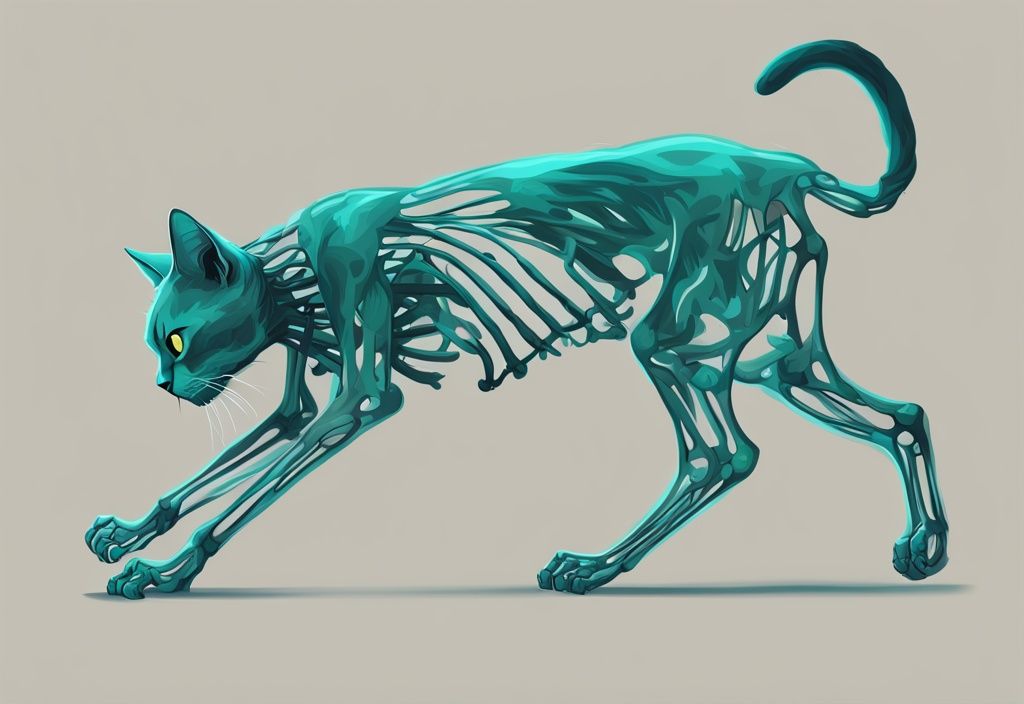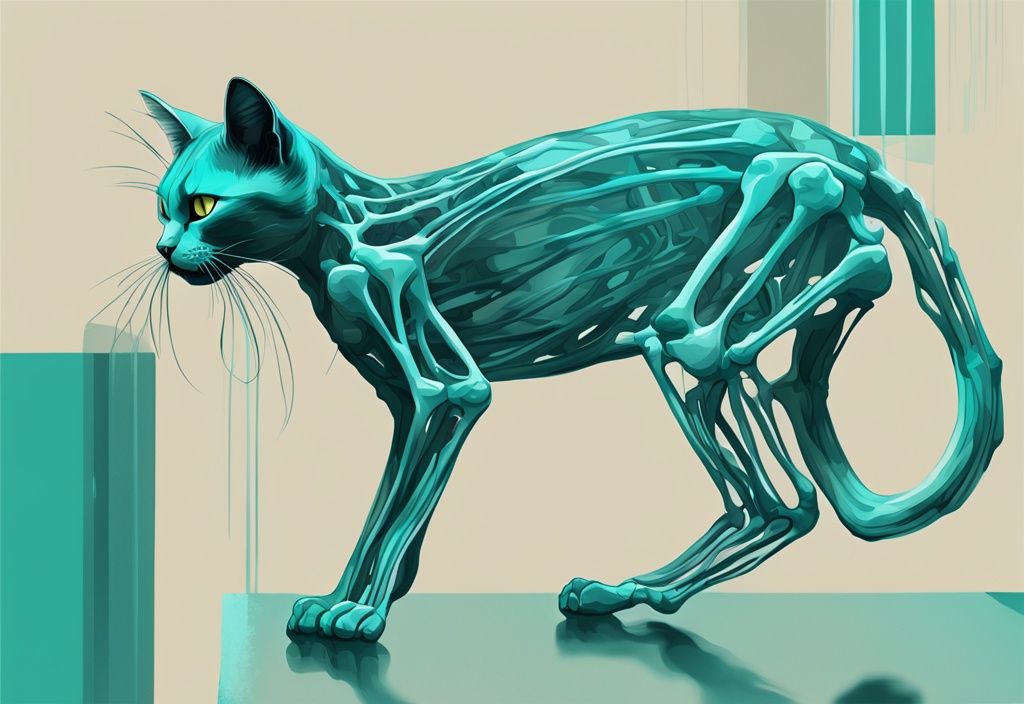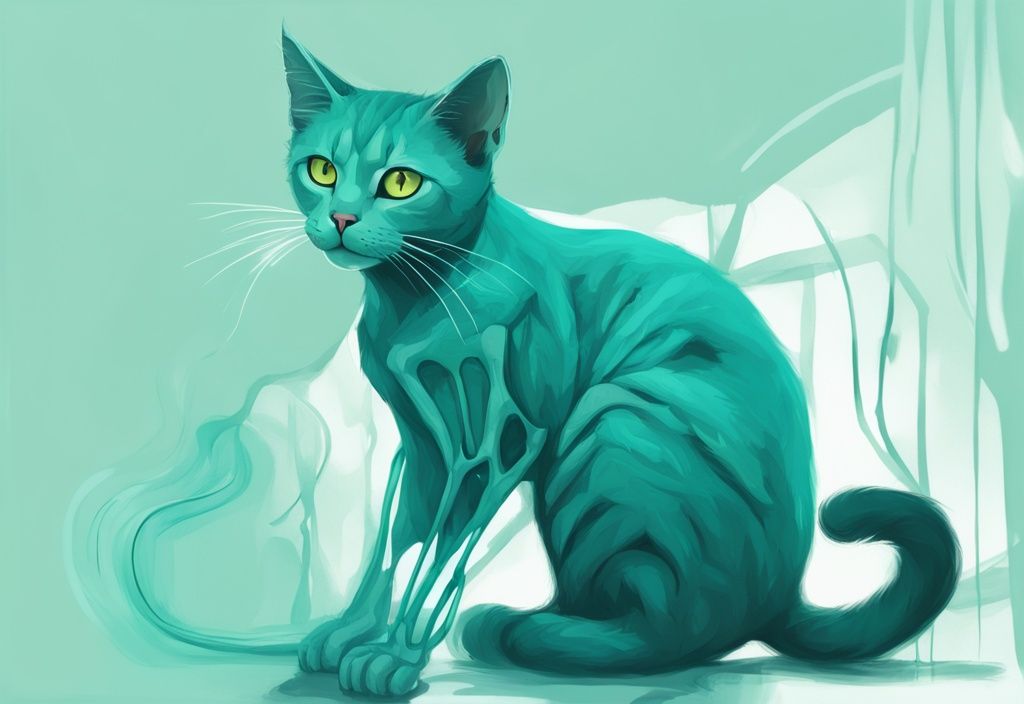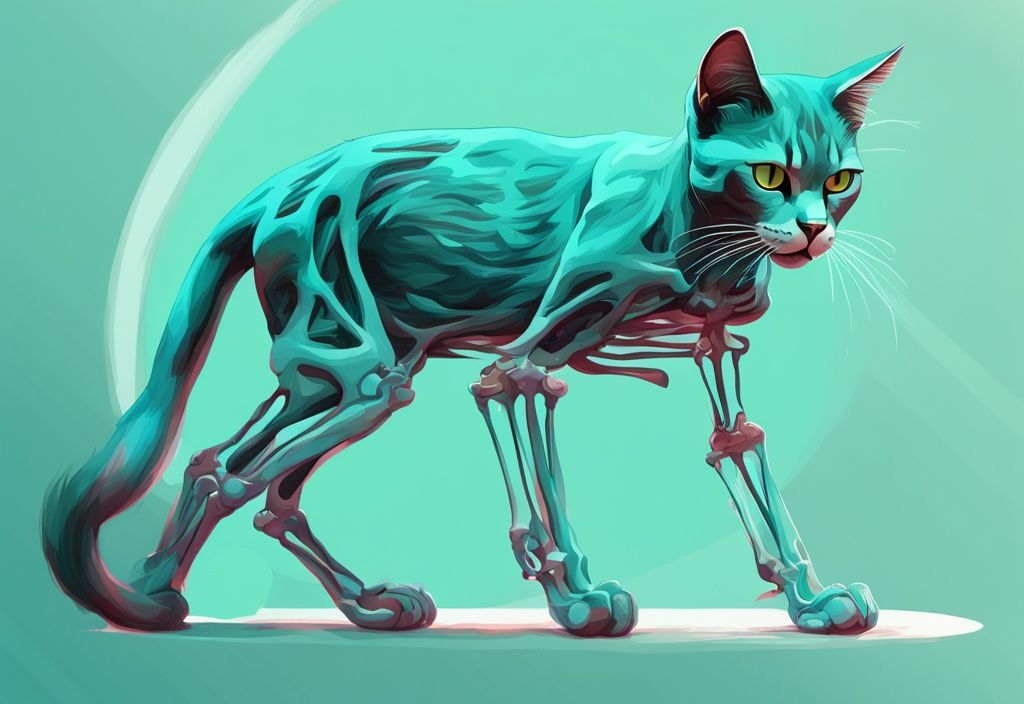Ever found yourself gazing at your cat as they effortlessly twist and turn, and wondered, “Just how many bones are in a cat?” Well, you’re in for a surprise! Cats, with their extraordinary agility, have between 230 to 250 bones – that’s more than us humans!
In this article, we’ll unravel the mystery of the feline skeleton, diving into how breed and genetic variations can influence their bone count. It’s a fascinating journey that will deepen your understanding and appreciation for our nimble, graceful companions.
So, whether you’re a curious cat owner or a feline enthusiast, get ready to discover what makes your furry friend so uniquely flexible. It’s not just fun trivia, it’s knowledge that could help ensure their health and well-being.
Detailed Breakdown of a Cat’s Bone Count
Ever wondered just how many bones are in a cat? Let’s dive into the fascinating world of feline anatomy and explore the intricacies of their skeletal structure. From their flexible spines to their nimble toes, cats have some unique features that make them the agile acrobats we adore.

Overview of Bone Structure
Did you know that cats have between 230 to 250 bones? This number isn’t set in stone—factors like breed, gender, and tail length can cause a bit of variation. Unlike us humans, who have a mere 206 bones, cats boast extra vertebrae in their spine. These additional bones are the secret behind their incredible flexibility and agility, making them the graceful climbers and stealthy hunters we love to watch.
Spinal Column and Vertebrae
The spine is where the magic happens! A cat’s spine is made up of 48 to 53 individual vertebrae. Imagine that! The spinal column itself has around 30 vertebrae, including 7 cervical, 13 thoracic, 7 lumbar, 3 fused sacral, and 18 to 23 caudal vertebrae. This intricate setup is what gives cats their famous ability to twist, turn, and leap with such ease.
Thoracic, Lumbar, and Caudal Vertebrae
Let’s break it down a bit further. The 13 thoracic vertebrae are crucial for supporting the rib cage. Meanwhile, the 7 lumbar vertebrae provide flexibility to the lower back, enhancing a cat’s ability to twist and turn like a gymnast. And those caudal vertebrae? They range from 18 to 23 and are all about the tail—helping with balance and communication. Who knew a tail could be so talented?

Rib Cage and Skull
With 13 pairs of ribs, cats have a rib cage that’s both protective and flexible. The first 9 pairs are securely attached to the sternum, while the last 4 pairs are known as floating ribs. As for the skull, it’s made up of 29 bones, including the mandible and maxilla. These bones are held together by fibrous joints called sutures, providing protection for the brain and sensory organs while allowing for a range of facial expressions. Ever seen a cat pull a face? If you’re curious about feline behavior, you might also be interested in learning how to get a cat out of a tree. Now you know how!
Forelimbs and Hindlimbs
When it comes to the forelimbs, cats have major bones like the humerus, ulna, and radius, along with smaller metacarpal bones and five toes, each with three tiny bones. The hindlimbs feature the femur, tibia, and fibula, plus smaller metatarsal bones and four toes. This setup is what gives cats their jumping prowess and running speed. Ever seen a cat sprint across a room? It’s all thanks to this amazing bone structure!
Major Bones and Digits
In the forelimbs, you’ll find the humerus, ulna, radius, metacarpals, and phalanges (digits). The hindlimbs include the femur, tibia, fibula, metatarsals, and phalanges (digits). These bones work together like a well-oiled machine, providing strength and dexterity. It’s what allows cats to perform those intricate movements with such precision. Pretty impressive, right?

Unique Bones in Cats
Baculum and Hyoid Bone
Now, here’s something interesting: male cats have a unique bone called the baculum or penile bone, which females don’t have. And let’s not forget the hyoid bone in a cat’s throat. Its unique structure allows cats to produce a wide array of sounds, from that soothing purr to a fierce hiss. It’s all part of their communication toolkit, making them the vocal creatures we adore.
Factors Influencing the Number of Bones in a Cat
Genetic Variations and Mutations
Genetic quirks, like polydactylism, can lead to extra digits and bones, adding to the variability in a cat’s bone count. These genetic variations are fascinating examples of how nature can influence physical traits and bone structure. Ever seen a cat with extra toes? That’s polydactylism in action!
Breed Differences
Different cat breeds have variations in bone count, mainly due to differences in tail length and structure. Some breeds might have more or fewer caudal vertebrae, affecting the overall bone count and contributing to the diversity in feline anatomy. It’s just another reason why every cat is a unique masterpiece!
